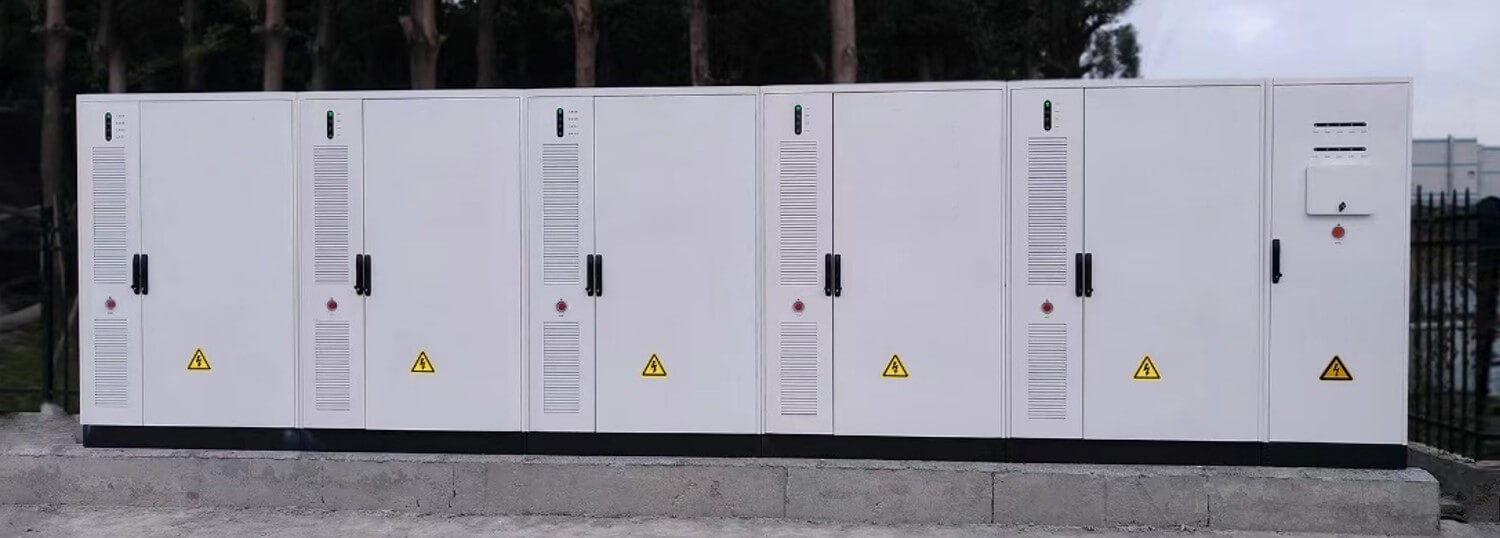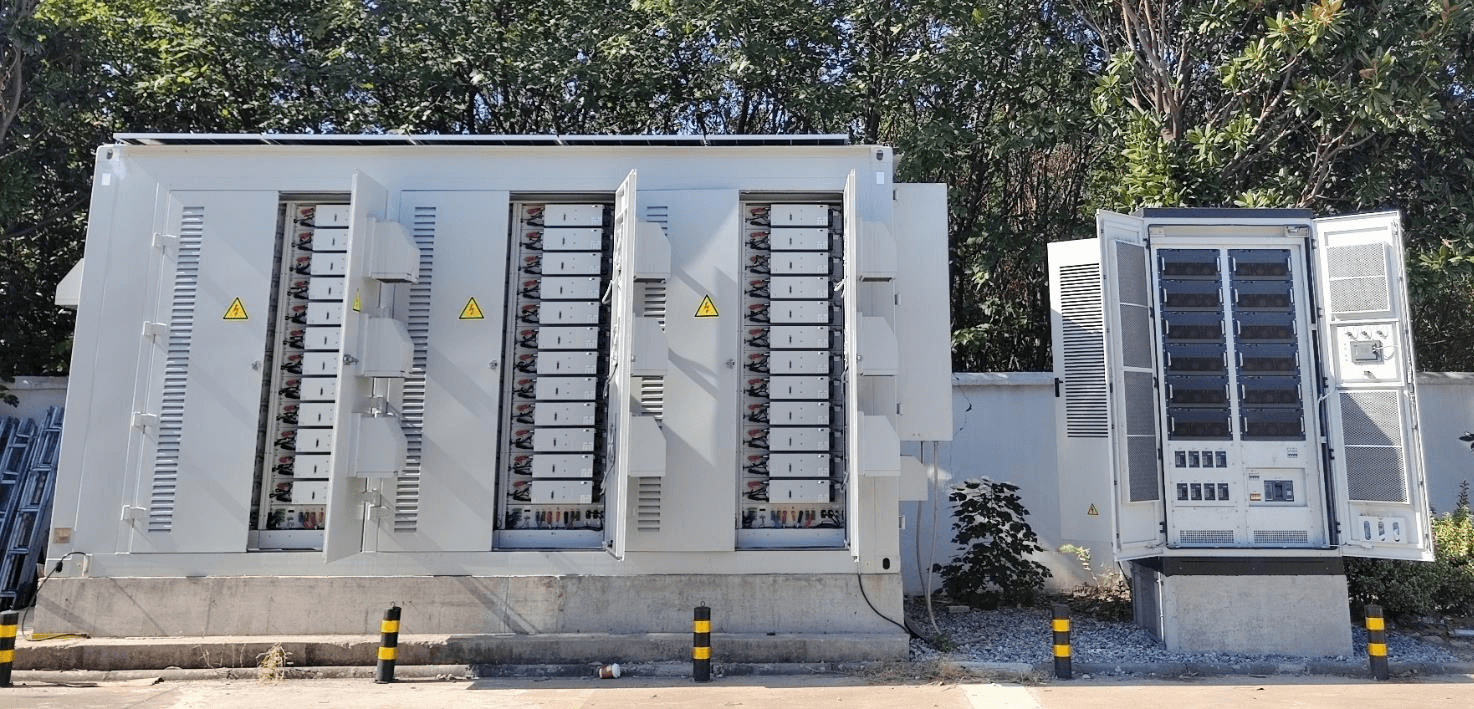As experts in commercial and industrial energy storage systems, Enjoypowers understand the importance of robust design and cost-effectiveness.
We once introduced that there are three topologies for energy storage systems, and currently String topology is the mainstream solution.
In this article, we explore two representative implementation approaches for a 500 kW/1000 kWh energy storage system.
Table of Contents
Approach 1: Parallel Operation of Multiple 100 kW/200 kWh All-in-One Energy Storage Systems
The 100 kW/200 kWh energy storage system is currently the most popular choice for commercial and industrial applications in China. Here are the key reasons:
- Battery Cell Considerations:
- The best-selling battery cells in China are typically 280 Ah LiFePO 4 cells. (Regarding battery selection, you can check this article)
- A battery module typically consists of 15 or 16 cells.
- Based on the direct current (DC) voltage range of the power conversion system (PCS) (600-950 Vdc), we define the battery cluster voltage as either 720 Vdc (15 cells) or 768 Vdc (16 cells).
- Consequently, the corresponding battery capacity is 201.6 kWh (720 Vdc * 280 Ah) or 215 kWh (768 Vdc * 280 Ah).
- Common Use Case:
- Peak shaving and valley filling (time-of-use optimization) are the most common applications for commercial and industrial energy storage.
- These applications typically involve 2-hour charge and discharge cycles.
- Therefore, 100 kW/200 kWh or 100 kW/215 kWh energy storage systems are well-suited for these scenarios.
- Standardization and Simplification:
- To facilitate production, installation, and commissioning, we integrate the battery modules (including air conditioning, fire protection, and cabinets for environmental control) along with the energy storage PCS and energy management system (EMS) into a single outdoor enclosure (IP54-rated).
Enjoypowers’ 105 kW PCS, known for its outstanding performance and competitive pricing, has gained significant popularity. In 2023 alone, we shipped over 7500 PCS modules.

For large-capacity energy storage systems like the 500 kW/1000 kWh configuration, Chinese suppliers often choose to parallel five sets of 100 kW/200 kWh ESS. While this approach offers modular products and cost savings, it lacks customization options and may not address diverse application scenarios.
Approach 2: Separating Battery Cabinets and PCS in a Containerized Solution
In the second approach, we separate the direct current (DC) battery installation within a container while placing the PCS module in a standalone outdoor cabinet designed to match the container aesthetics. Here’s how it works:
- Customization Flexibility:
- We calculate the battery capacity and PCS power independently based on customer requirements.
- Matching the battery voltage range to the PCS’s DC voltage range ensures compatibility.
- This approach allows customers to tailor their energy storage system precisely to their needs.
- Supplier Independence:
- By decoupling the DC and alternating current (AC) components, we enable separate supply arrangements.
- Customers can work directly with battery manufacturers and PCS suppliers, optimizing each component’s performance.
- Collaboration for Optimal Solutions:
- While most energy storage system demands are directed to Chinese battery manufacturers (due to their significant cost contribution), not all battery manufacturers excel in AC-side design.(How to choose the right PCS for industrial and commercial energy storage projects, you can check this article)
- When battery manufacturers and PCS suppliers collaborate effectively, they can deliver customized, reliable, and cost-effective energy storage solutions.

Conclusion
In the future, energy management system (EMS) and PCS manufacturers will play a pivotal role in defining energy storage system functionality and application scenarios. Batteries serve as mere energy carriers. As a renowned Chinese commercial and industrial energy storage PCS manufacturer, Enjoypowers eagerly anticipates close collaboration with EMS-capable system integrators to provide high-reliability, low-cost energy storage solutions.
Related Reading
Enhancing Commercial Energy Storage Systems with Direct PCS-BMS Communication
Understanding Load Characteristics and Design Considerations for Commercial Energy Storage Systems
Hybrid ESS Energy Storage Systems: Unleashing Efficiency Through AC and DC Coupling
6 Essential Strategies for Choosing C&I BESS Energy Storage Battery Solutions
10 Essential Steps to Optimize Your C&I Energy Storage System ESS with the Right PCS
Decoding 3P3W vs. 3P4W for Commercial and Industrial Energy Storage PCS
3 different topologies of energy storage systems ESS and their development history
Keywordsl: Energy Storage Systems, Parallel Operation, Customization Flexibility
